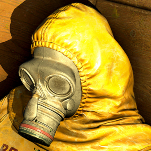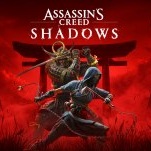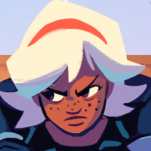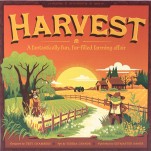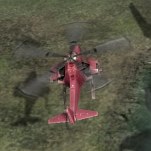Paper Mario: Sticker Star (3DS)
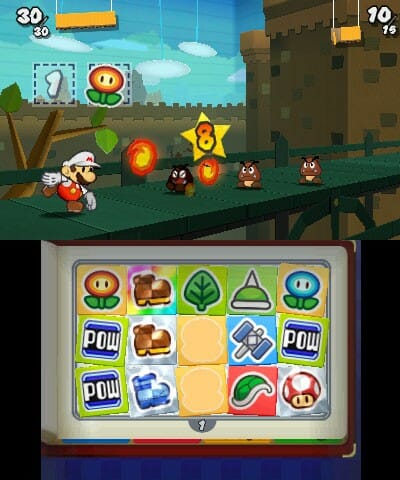
Paper Mario: Sticker Star really, seriously, is all about paper and stickers. While previous Paper Mario games used the newsprint nature of Nintendo’s mascot largely to justify flat, 2D sprites in a boxy 3D world, Paper Mario: Sticker Star is origami to its core. The game’s Mushroom Kingdom is rendered in construction paper and cardboard, its inhabitants constantly discussing their papery nature. This commitment to Sticker Star taking place in a pliable reality lets developer Intelligent Systems free their imaginations to fold, tear and, of course, sticker the game into a collage of fresh visuals, platforming and puzzles.
Before we get to anything new, though, we have to sit through the setup for a Mario story as old as time. Bowser arrives at the Mushroom Kingdom’s Sticker Fest—an event I quietly mocked until I remembered my town spends a weekend celebrating Marshmallow Fluff—and grabs the Sticker Comet, scattering stickers both magical and plain all over the place and nabbing Princess Peach in the process. It’s up to a silent Mario—not even an “It’s a-me!” to be heard—and his mouthy living sticker sidekick Kersti to do the usual rounds of saving the day by collecting the stickers (specifically the sparkling crown-shaped Royal Stickers).
These stickers pretty much end up all over the place. They turn up about twice as frequently as the word “sticker” appears in this review: on blocks, on walls, on the ground, dropped by enemies, as pieces of puzzles. Thankfully the simple action of peeling them, accompanied by an intensely rewarding “pop!”, is always satisfying, and also life-saving. With most of the game’s RPG elements trimmed away Mario lives and dies by the number of tiny reflective squares in his Sticker Book.
In the shape of classic Mario power-ups, the titular stickers simplify combat to choosing from a list of collectable, consumable items and slapping them on your enemy. There are no free actions in Sticker Star, and just taking a single swing at a Koopa or hopping on a Shy Guy’s head requires a sticker. Stickers come in a few varieties, so there’s light strategy involved—hammer the pointy enemies, jump on the flying enemies, and fire-flower or blue shell anyone left standing—and your tolerance for a battle system as minimalist as the world it takes place in is a good indicator of how much fun you’ll get from Sticker Star.
The one real choice comes from deciding when to use your Thing Stickers. The only non-paper items in the game, Mario occasionally stumbles across a photo-realistic pair of scissors, an air conditioner, a goat figurine or some other equally quirky, well… thing. A short trip to a Toad in town who “stickerizes” them and suddenly I’m equipped with an ultra-powerful attack sticker. Great news, but they often take up 1/3rd of a page in your space-limited Sticker Book and are complete overkill against your average Goomba. I never felt like the game allowed me to strike a balance—given the option of stickerizing my special items and foregoing normal stickers or stocking up on boots and hammers to get the job done, I never felt like I’d made the right choice.
Nowhere is the problem with this combat system clearer than during the game’s boss battles. Facing massive stickerized enemies who have hundreds of hit-points (compared to the 8-12 points of normal foes) might just add a needed challenge. Unfortunately, these bosses shrug off normal Stickers, reducing their effectiveness to only a few points of damage per attack. Since Mario can typically only attack once a turn (a slot-machine style “Battle Spinner” can provide extra attacks, but I found it too inconsistent to use reliably, when I remembered it at all) these fights quickly go from exciting new encounters to dull slogs.
The solution is, of course, the Thing Stickers’ potent power. But often bosses are only vulnerable to one or two types of Thing Stickers. A trip into town could get the sticker needed, but in a baffling decision, the game only presents hints about which stickers to use either DURING or AFTER a boss fight. My most irritating moment with Sticker Star came after using every single sticker from my book to defeat a boss, only to have Kersti turn to Mario and suggest I use scissors on the boss that I just defeated. Very timely advice, Kersti. Lacking any information, I started carrying as many Thing Stickers into boss fights as I could. This resolved my frustration, but since there’s little strategy to playing these hugely powerful stickers, boss battles became solved problems, an anti-climactic formality so I could get another page for my sticker book and move on to the next batch of levels.

Thankfully with those levels Sticker Star displays a sense of inventiveness and anything-can-happen adventure. The goal of each level is simply to find the exit, which requires a combination of platforming and puzzle solving using Sticker Star’s other big thematic game mechanic, “Paperization.” Kersti, upon command, takes the 3D level of the top screen and knocks it back into a flat 2D plane. This lets Mario peel back pieces of the environment to flip them, or reattach them upside down, or on a different paperized screen. The Thing Stickers can also be slapped into place to affect the environment—fans and air conditioners blowing things over, heaters melting, or vacuums sucking up debris. These puzzles are all very linear, and their roots in classic adventure games sometimes show through overly obtuse steps, but combined with exploration and platforming, these levels gave me a persistent sense of satisfaction that other games only dole out in small doses.
-

-

-

-

-

-

-

-

-

-

-

-

-

-

-

-

-

-

-

-

-

-

-

-

-

-

-

-

-

-

-

-

-

-

-

-

-

-

-

-


































